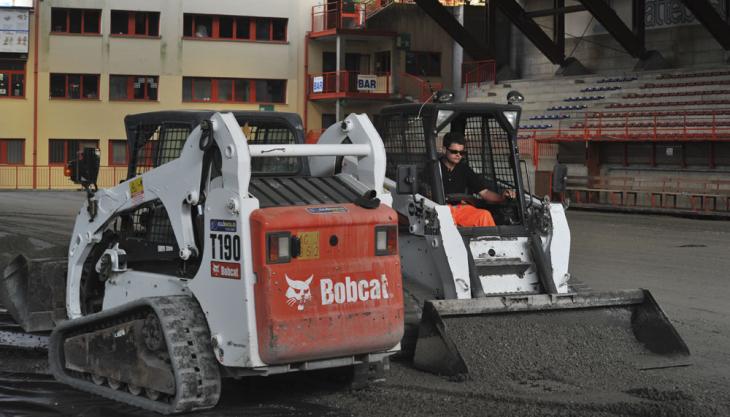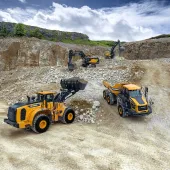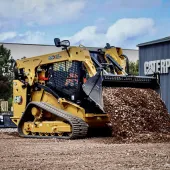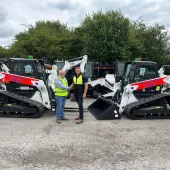Bobcat tracked loaders chosen for unusual surfacing contract

T190 and T250 compact loaders used in construction of ice rinks for World Bocce Championships
The low ground pressure exerted by Bobcat T190 and T250 compact tracked loaders has provided a novel solution for building court surfaces for the World Bocce Championships held recently at the ice rink in Feltre, Italy.
In a solution proposed to the organizing committee for the Bocce championships by the project’s contractor, Costruzioni 3 B, the Bobcat tracked loaders were preferred to heavier machines to load a small paver on the site as they met the weight restrictions for working on the concrete slab encasing the refrigeration system that normally forms the ice for the ice rink. The width and length of the tracks on the Bobcat loaders ensured the machines did not exceed the maximum load of 1,500 kg/m2 that could be carried by the concrete slab.
The concrete surface of the ice rink was the only feature that had to be changed at the Feltre venue, which had been chosen by the organizing committee because it provided suitable infrastructure and its 2,300 seats would allow a sizeable number of spectators to attend the event.
Competition bocce requires that the court surface be covered with a special type of sand, laid to a thickness of about 2cm. There were two problems with laying this directly on the concrete – the first involved friction since the layer of sand would be slippery and the other related to noise, because the bocce would land on the sand and cause reverberations through the concrete, creating a distraction for spectators and the TV companies broadcasting the event.
To prevent this Costruzioni 3 B proposed laying a high-strength geotextile sheet over the entire surface over which was laid a 7cm cement layer that would be prevented from attaching to the concrete surface underneath by the geotextile sheet. The layer of cement would also have the function of insulating the sheet from the heat of the 7cm layer of asphalt laid on top to create grip and ensure soundproofing conditions. By separating the layer of asphalt from the geotextile sheet with a 7cm layer of cement mix, the concrete slab was also protected from damage due to any melting of the polymeric material of the geotextile sheet, which would otherwise come in direct contact with the hot-mix asphalt.
For more information visit: www.bobcat.eu









